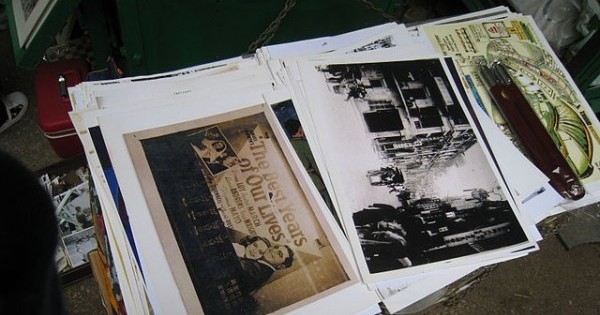
My maternal great-grandfather, Abraham Lincoln Erisman, was born in 1862, the child of a foot soldier in the Civil War. He grew up to become a traveling preacher. In 1896, age 34, he died of typhoid fever. His infant daughter, Olive Naomi Erisman, was my grandmother.
I remember Abraham Lincoln Erisman, in a manner of speaking. I have a photograph of him, a square-faced man with a trim beard wearing a thick-looking three-piece suit. I carry that image in my head. Oh, I mean, in my brain. Somewhere … in my brain. Do we, then, have a great-grandfather neuron, a single neuron or a single couple of neurons that begin firing at the sight of (memory of?) (memory of photo of?) our great-grandfather? Some have thought so.
I am reading Antonio Damasio’s Self Comes to Mind. Damasio argues against the great-grandfather neuron. A person can be brain damaged, he says, and recognize a photo of, say, a wedding. This brain-injured person knows that this is a wedding. Here is the bride, here is the groom, here is the wedding cake, here is the mother of the bride, down to the last detail. There is only one problem. This brain-injured person fails to recall that this was his own wedding.
Memory, in other words, is composite. Different aspects of a memory are generated from different parts of the brain. And there are different types of memory.
There’s semantic memory, memory of facts and concepts. It’s semantic memory that recognizes that a white dress draped in a veil is a wedding dress. There’s episodic memory, which constructs the personal events of life into a coherent autobiography, which holds the information that this was your wedding. There’s working memory, which enables you to remember that right now you are reading a piece on memory.
Semantic memory, episodic memory, and working memory are aspects of “declarative memory.” Quintessential to declarative memory is the brain structure called the hippocampus. (You can lose your hippocampus—Alzheimer’s being the great thief—and still remember how to fry an egg or make a bed, procedures the body remembers, called procedural memory.)
Memory is reconstitutive. During memory, neurons from all over the brain, the ones that fired during the original experience, fire again. Neurons firing in the visual cortex re-create visions; neurons firing in the auditory cortex re-create thunder or opera. But these assemblies of neurons re-fire with less strength. And with fuzzy boundaries. Memory is an unreliable narrator. It’s less like a scanned photo, more like a Civil War re-enactment.
And keep in mind (however you do that) that we Homo sapiens have an immense external memory—language, the written word, the photograph. My great-grandfather’s name remembers the Abraham Lincoln that we all remember.
Or that we all imagine. For memory and imagination are identical twins, the same while also being different. During functional magnetic resonance imaging (fMRI), which measures blood flow in the brain and thus brain activity, memories of the past and visions of the future light up the same areas of the brain. Amnesiacs who can’t remember yesterday can’t imagine tomorrow.
Back to my great-grandfather. He feels distant but close. I carry some of his genes so that in some weird sense, some part of him is writing this piece about remembering him. Abraham Lincoln Erisman lives in my memory—exactly as I imagine him.

